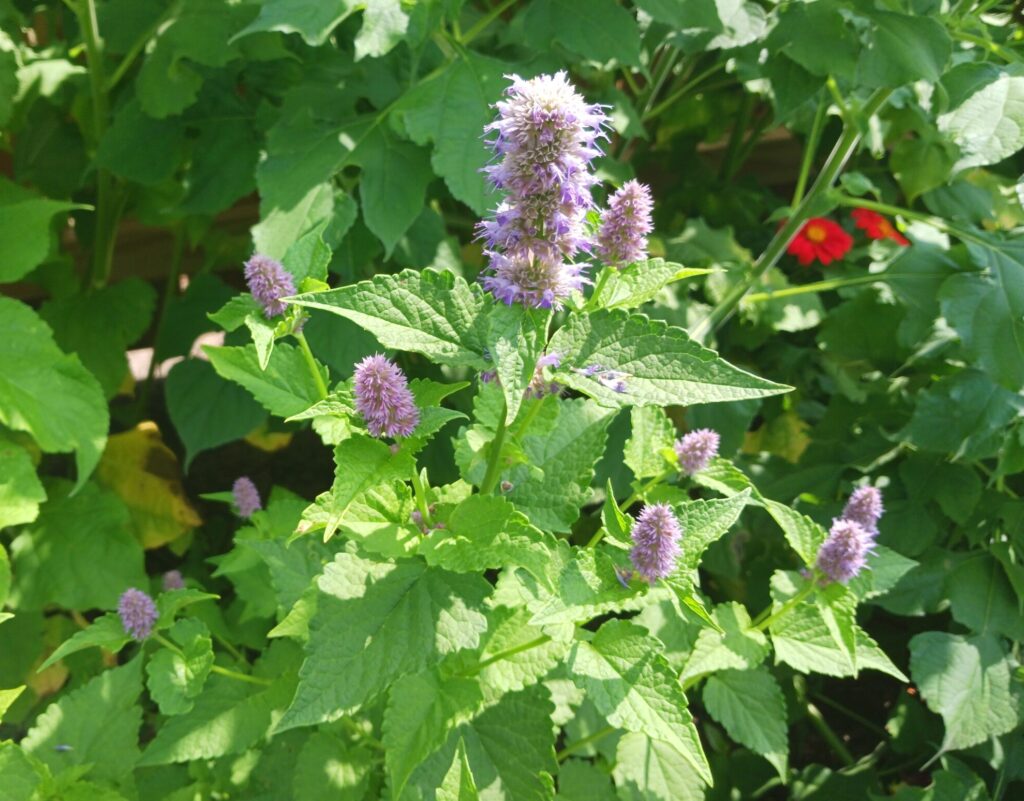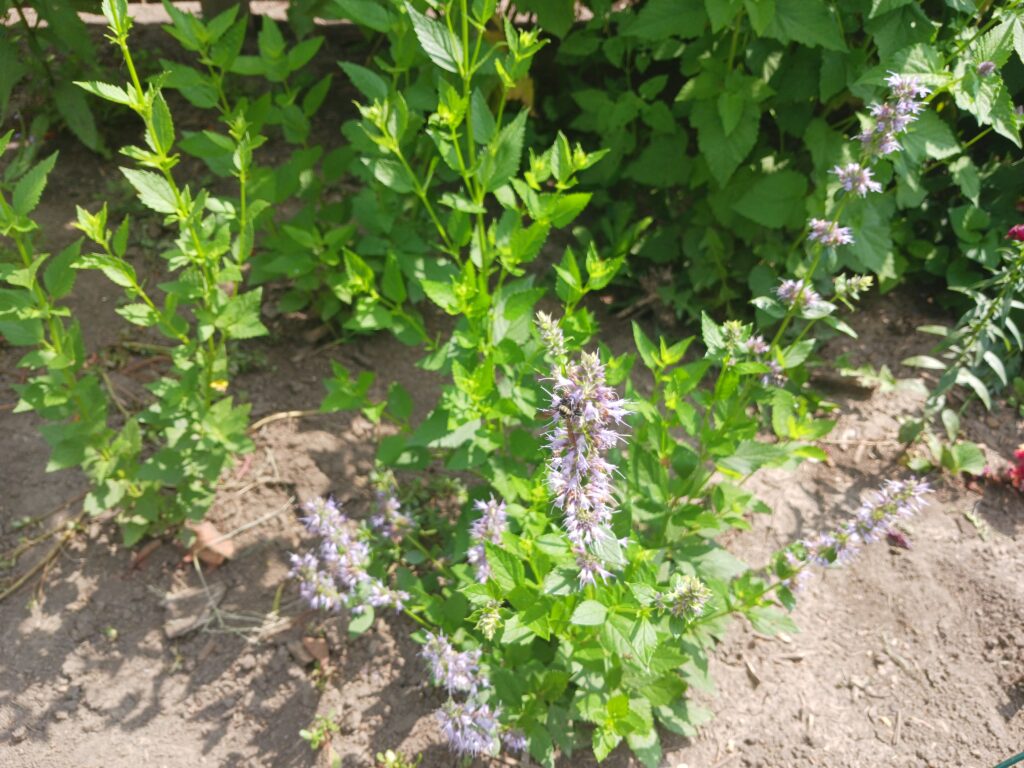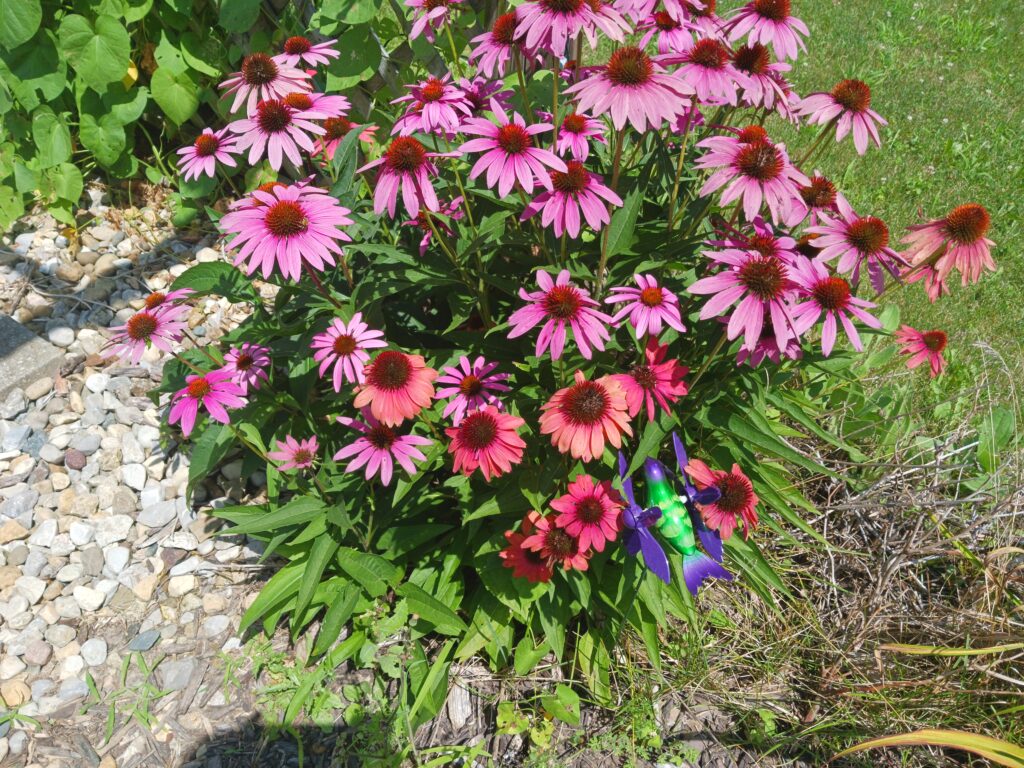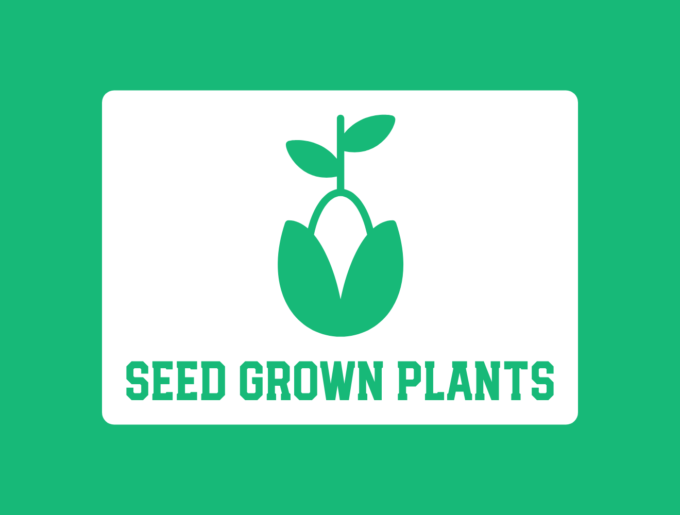The Results of Plants from Seed
The plants shown below are those started from seed under lights indoors in late winter and early spring. The first photo on the left is a form of Amaranth, and is to be a source of food for birds as the plume heads ripen. It is, also, supposed to be popped like popcorn in a frying pan. I will experiment with it this fall to see how easy and palatable it is. The second photo in the middle is an orange zinnia which can be easily grown by direct seeding outside in warmer days when your zone is frost free. The third photo in the gallery is showing the ” Mexican” sunflower and the Amaranth growing by my six foot fence in the backyard. This year I wanted to focus on pollinator plants. It appears to be a success. Hummingbirds congregate on the sunflowers in morning and evening as well as butterflies throughout the day. Both the sunflowers and Amaranth have topped the fence, so they have reached their expected height. Only problem is a shallow root system, so I have lost a few when we’ve had a heavy rain, and they have toppled over. A funny thing about the hummingbirds occured last week. We have a new rescue dog named Luna who startles easily probably due to being in a shelter, and then in foster and finally with us. She seems to like smelling flowers, and she was investigating the sunflower blooms, and suddenly jumped a foot or two into the air, yelped and came flying toward us. It seems she was buzzed by a hummingbird. The bottom photo in the gallery shows a close up of the Mexican Sunflower when starting to bloom.
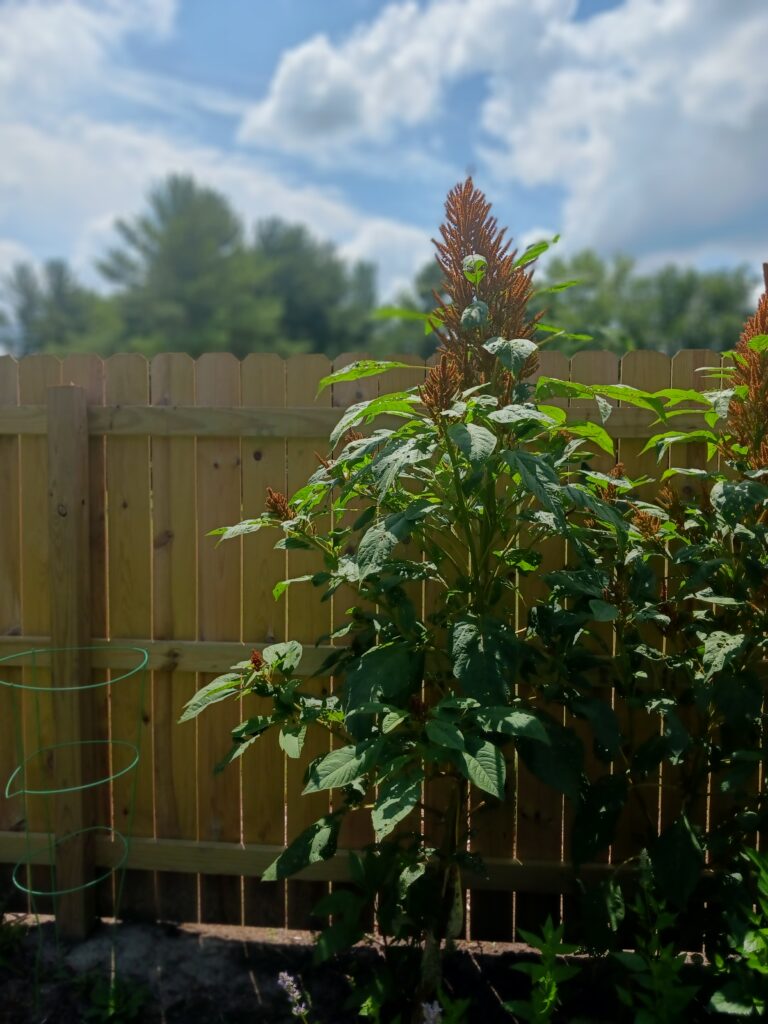
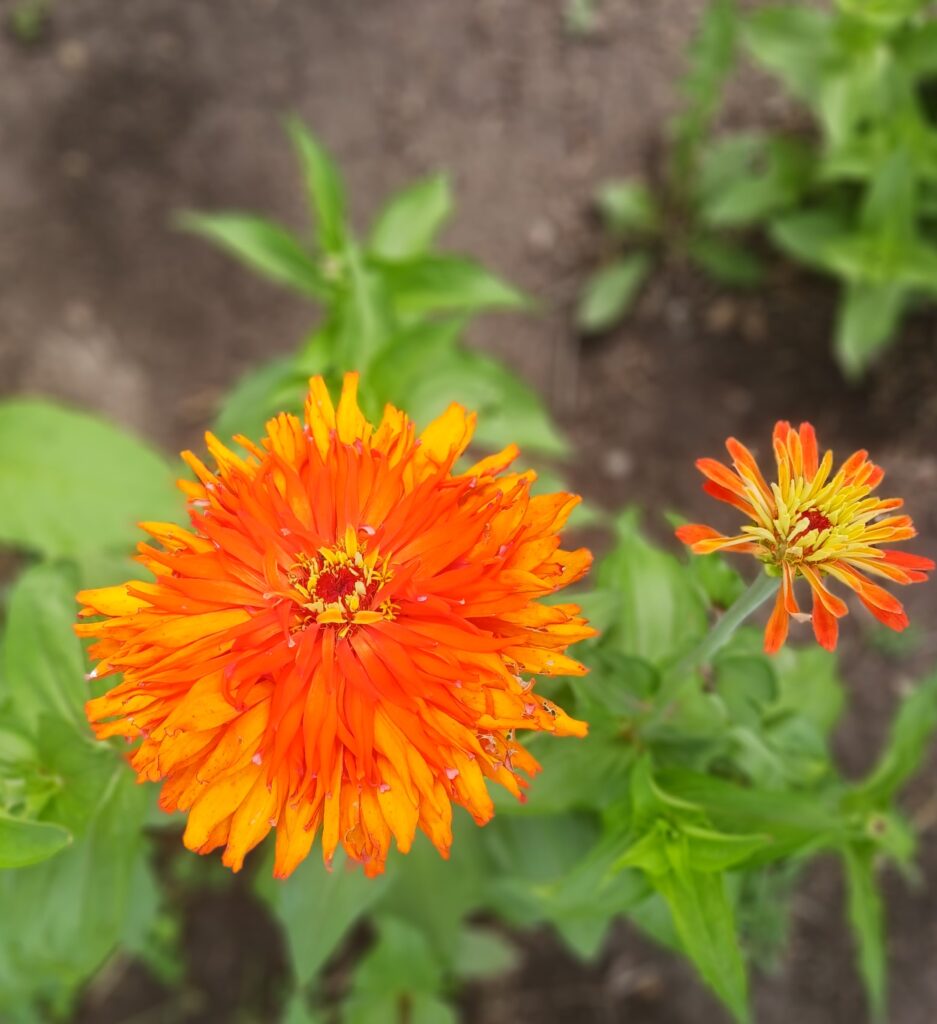
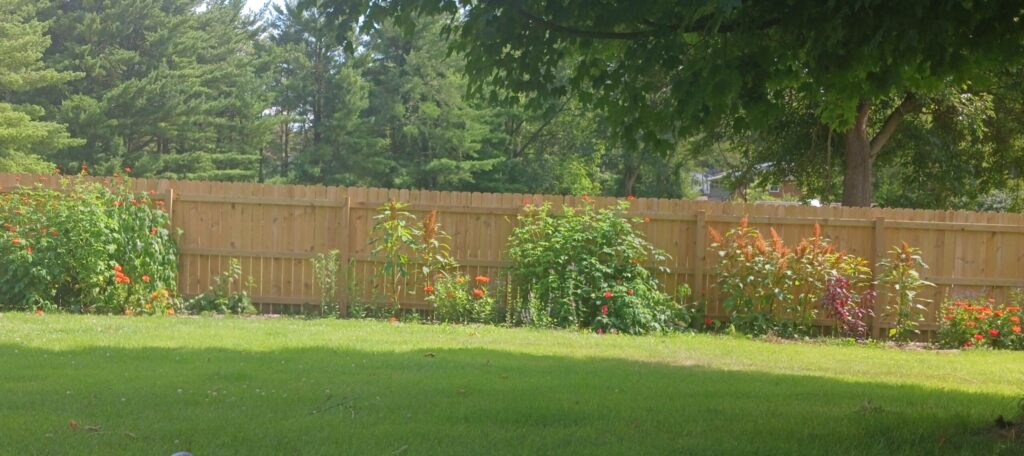
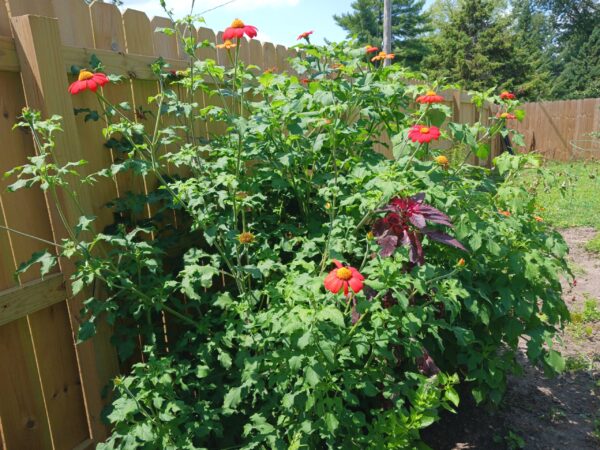
Additional photos below show some more of native pollinator plants in the border. Blue Sage shown on the left is very attractive to pollinators and is easy to grow from seed started indoors. It is drought and cold resistant blooming in late summer into fall, and provides a nice splash of blue to contrast with the yellows, oranges and reds of fall. The plant in the center is “Anise Hyssop” and is resistant to deer and is fragrant. The leaves smell and taste of licorice and can be used for tea. The native peoples used plants like this for medicinal purposes as well. Anise is an ingredient that can be used in baking, but is made from the seed of another plant. Native bees and honeybees as well as butterflies will pollinate this plant. The third plant on the right is an example of nature doing her own thing. The original plant, grown from seed, was a bright red-orange. It dropped seed in the fall which produced the rosy pink plant and blooms the following year. Then this year, some more seed germinated around the original plant and birthed a new orange plant. Anyway, the pollinators are not so choosy they only go after one color, so it works fine.
